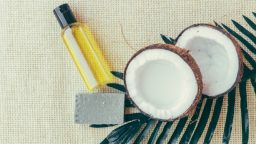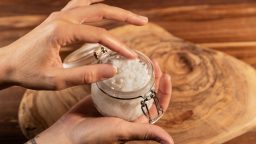Body swelling, or edema, occurs when excess fluid builds up in the tissues, leading to puffiness, discomfort, and sometimes even pain. It can be caused by a variety of factors, including injury, poor circulation, hormonal changes, or a sedentary lifestyle. While swelling can sometimes indicate a medical condition that needs attention, there are also many natural remedies that can help reduce swelling and ease discomfort.
If you’re dealing with swelling, whether in your feet, ankles, hands, or other parts of the body, here are some natural remedies to reduce body swelling and promote fluid balance.
- Elevate Your Legs
One of the simplest and most effective ways to reduce swelling in the legs, feet, and ankles is to elevate them above the level of your heart. This helps improve circulation and allows fluid to drain back towards the heart, which can alleviate the buildup of excess fluid in the lower extremities.
How to do it:
- Lie down and prop your legs up on a pillow or cushion, ensuring that your feet are elevated higher than your hips.
- Try to keep your legs elevated for at least 20 minutes a few times throughout the day to see improvements.
This technique is particularly helpful for people who experience swelling due to sitting or standing for long periods.
- Drink More Water
It may seem counterintuitive, but drinking more water can actually help reduce swelling. When your body is dehydrated, it tends to retain water as a defense mechanism, leading to increased swelling. By staying properly hydrated, you encourage your body to release excess fluids.
How to do it:
- Aim to drink at least 8 cups (64 ounces) of water per day. You can also incorporate water-rich foods such as cucumbers, watermelon, and oranges into your diet for added hydration.
- Avoid drinking too much caffeine or alcohol, as these can have a dehydrating effect.
Drinking water helps to flush out toxins and excess salt, both of which can contribute to swelling.
- Epsom Salt Bath
Epsom salt is a natural remedy that can be incredibly effective in reducing swelling, especially in the feet, ankles, and legs. It contains magnesium sulfate, which is absorbed through the skin and helps draw excess fluid from the body, easing inflammation and promoting relaxation.
How to do it:
- Add 1–2 cups of Epsom salt to a warm bath and soak for 15–20 minutes.
- Soaking in the bath allows your body to absorb the magnesium, which may help reduce swelling and relieve muscle tension.
This soothing remedy is especially beneficial after a long day of standing or exercise, helping to relax both your body and mind.
- Ginger and Turmeric
Both ginger and turmeric are powerful anti-inflammatory herbs that have been used for centuries to reduce swelling and inflammation in the body. Ginger contains compounds that help improve circulation, while turmeric contains curcumin, which has strong anti-inflammatory properties that can help reduce swelling.
How to use:
- You can make a ginger tea by boiling fresh ginger slices in water for about 10 minutes, or you can add turmeric to your meals, smoothies, or teas.
- Alternatively, you can create a turmeric paste by mixing turmeric powder with a little water and applying it to swollen areas for localised relief.
These spices not only reduce swelling but can also improve digestion, which may prevent fluid retention caused by digestive issues.
- Dandelion Root Tea
Dandelion is known for its natural diuretic properties, meaning it helps to increase urine production, thus encouraging the body to release excess fluids and reduce swelling. Dandelion root can also support kidney function, which is important for managing fluid balance in the body.
How to use:
- Drink dandelion root tea regularly. Steep 1-2 teaspoons of dried dandelion root in hot water for about 10 minutes.
- You can also find dandelion supplements in health food stores, but be sure to consult with a healthcare provider before using them regularly.
Dandelion root tea can help your body naturally flush out excess fluids, reducing the pressure on swollen areas.
- Apple Cider Vinegar
Apple cider vinegar (ACV) is another effective remedy that helps reduce fluid retention in the body. ACV contains potassium, which is a key mineral that helps regulate sodium levels in the body, thus preventing fluid buildup and reducing swelling.
How to use:
- Mix 1–2 tablespoons of apple cider vinegar into a glass of water and drink it before meals.
- Alternatively, you can create a compress by soaking a clean cloth in a mixture of apple cider vinegar and water and applying it to the swollen area.
Drinking apple cider vinegar may help restore electrolyte balance, which is important for reducing water retention and swelling.
- Compression Socks or Stockings
Compression socks or stockings are specially designed to apply gentle pressure to the legs, which helps promote blood circulation and prevent fluid buildup in the lower extremities. These can be especially useful for people who spend long hours on their feet or suffer from conditions like varicose veins.
How to do it:
- Wear compression socks or stockings throughout the day, especially if you experience swelling in the legs, feet, or ankles.
- Be sure to follow the manufacturer’s guidelines for how long to wear them each day, as overuse can lead to discomfort.
Compression garments help with circulation and can be particularly effective in managing swelling caused by prolonged sitting or standing.
- Massage and Lymphatic Drainage
Gentle massage, especially lymphatic drainage massage, can help reduce swelling by promoting fluid movement and encouraging the lymphatic system to remove excess fluids from the body. Lymphatic drainage massage works by stimulating the lymph nodes and increasing circulation, which reduces inflammation and swelling.
How to do it:
- Using your hands or a foam roller, gently massage the swollen area in upward motions, towards the heart, to encourage fluid drainage.
- For a more targeted approach, consider booking a lymphatic drainage massage with a professional therapist.
This method helps promote detoxification, reduce swelling, and relieve tightness in the body.
- Reduce Salt Intake
Excessive salt intake is a common contributor to water retention and swelling. When you consume too much sodium, your body holds onto water to balance the sodium levels, which leads to swelling. Reducing your salt intake can help alleviate this issue and reduce swelling in the body.
How to do it:
- Avoid processed foods, fast food, and salty snacks, which are often high in sodium.
- Opt for fresh, whole foods and cook your meals at home to control the amount of salt in your diet.
- Use herbs and spices like garlic, onion, or lemon to flavour your food instead of salt.
Reducing sodium intake can help reduce the fluid retention that often leads to swelling.
- Cucumber and Aloe Vera
Cucumber and aloe vera are both cooling and hydrating ingredients that can help reduce swelling, especially in the face and under the eyes. They provide a cooling sensation that can soothe irritated skin while helping to reduce fluid retention.
How to use:
- Place chilled cucumber slices or aloe vera gel on the swollen areas for a few minutes. The natural cooling properties of both ingredients can reduce puffiness and inflammation.
- You can also blend cucumber into a smoothie or juice for added hydration, which can help reduce swelling from the inside out.
These natural ingredients are refreshing and hydrating, offering a quick way to soothe swollen areas.
Conclusion
Swelling can be uncomfortable, but with the help of these natural remedies, you can reduce fluid buildup and ease discomfort. Whether you’re using herbs like ginger and turmeric, incorporating elevating techniques, or choosing compression socks for better circulation, there are many ways to manage swelling naturally.
However, if swelling persists or is accompanied by pain, redness, or other concerning symptoms, it’s important to consult with a healthcare provider to rule out any underlying medical conditions. With these natural remedies, you can take charge of your body’s health and find relief from swelling in a safe and holistic way.





